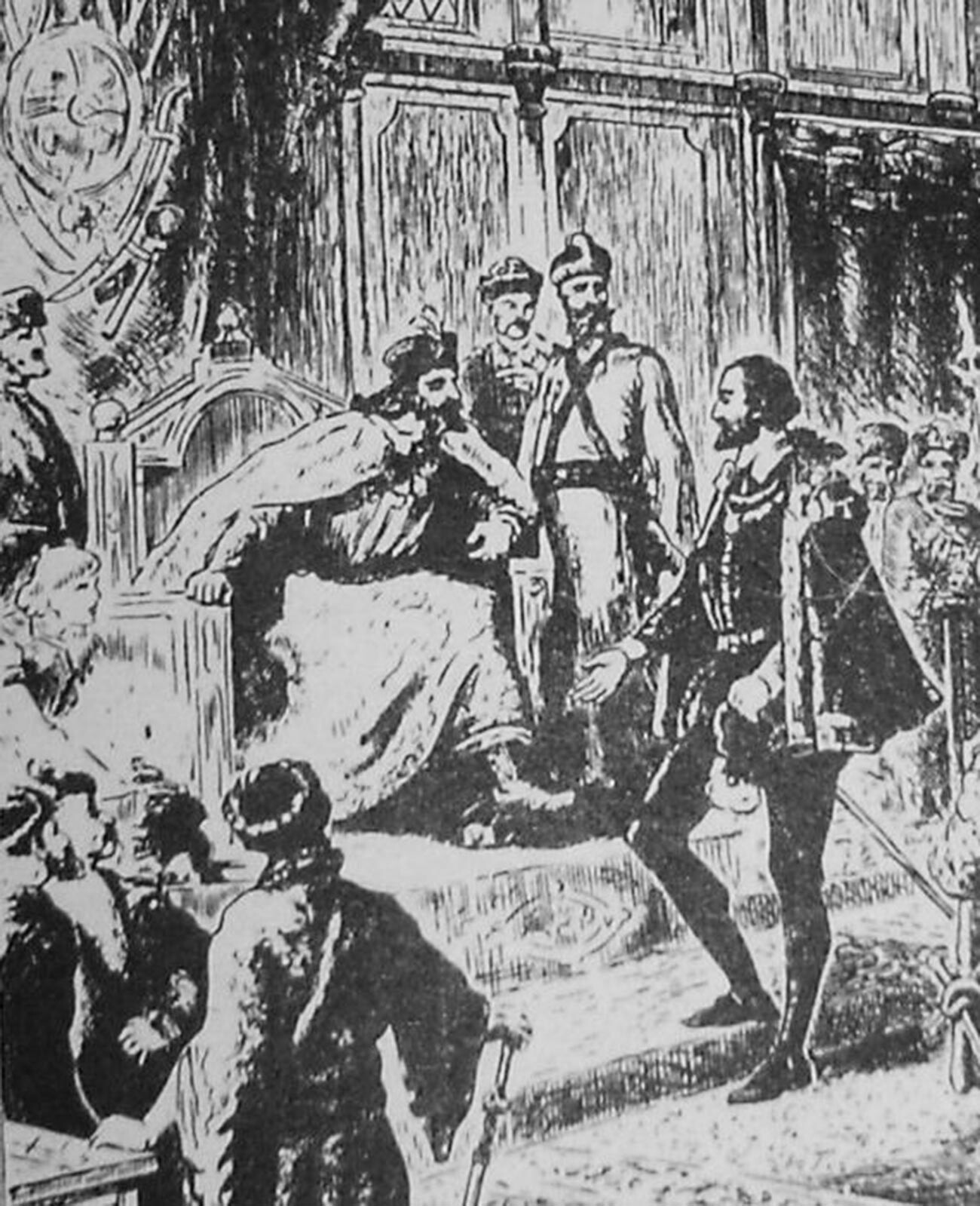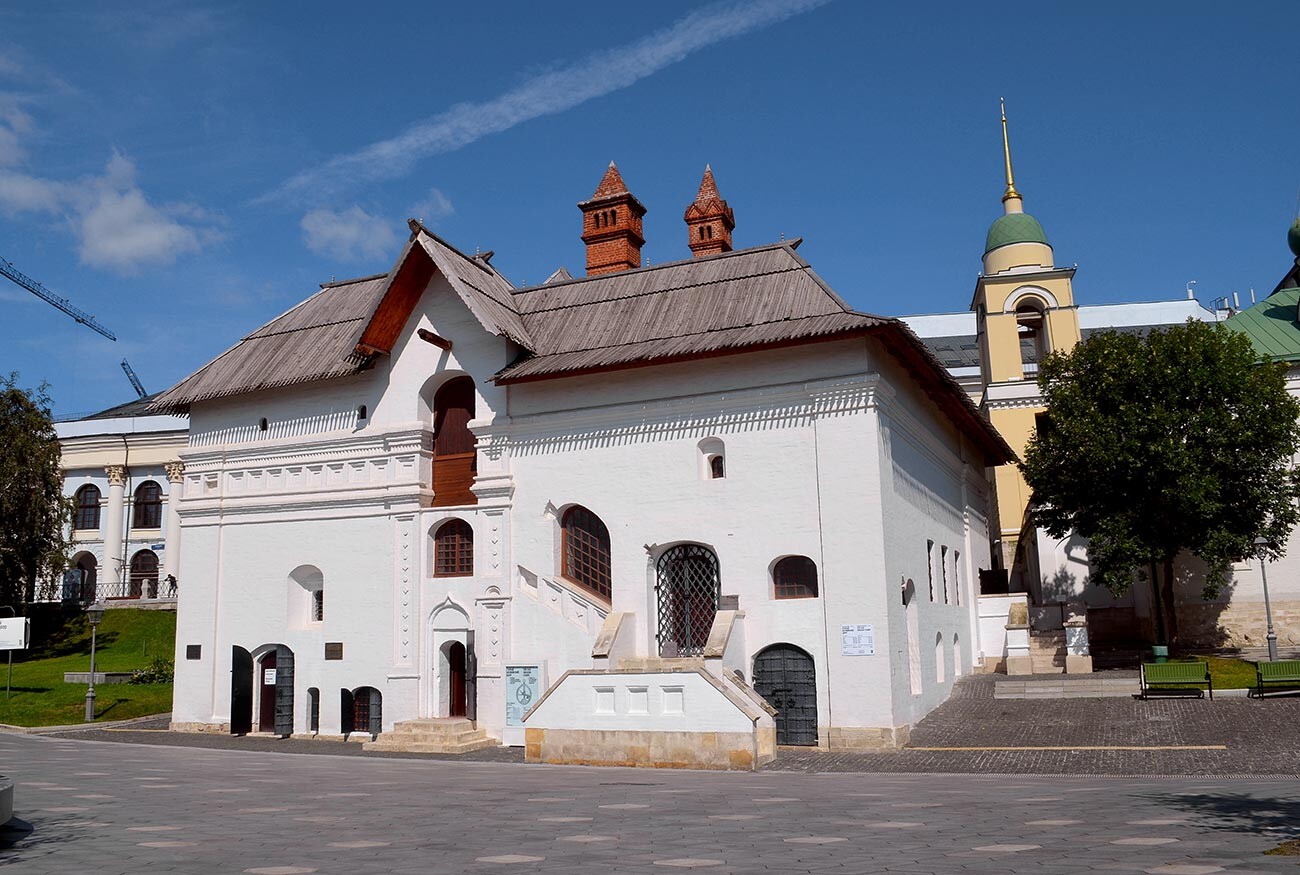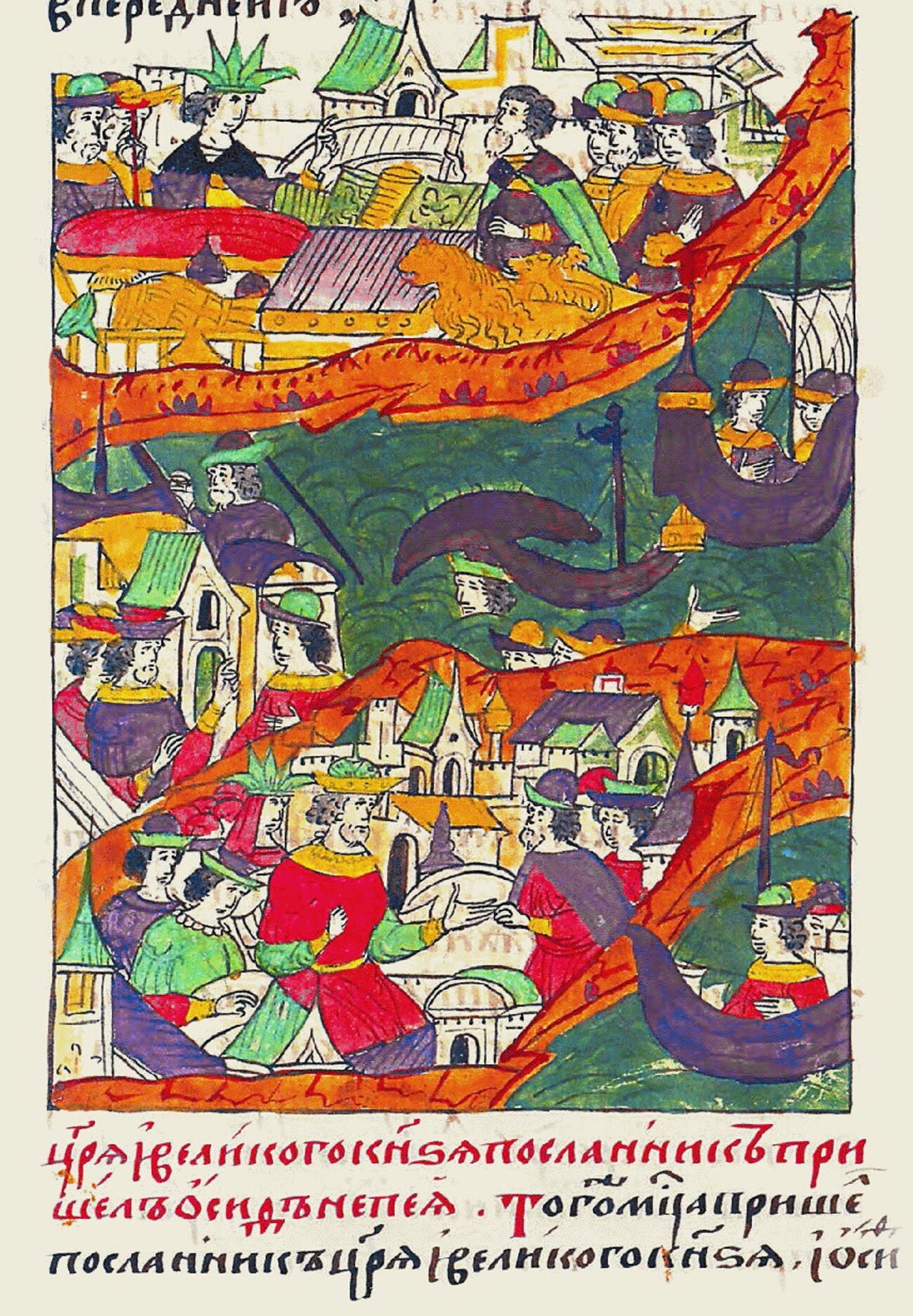
Ivan the Terrible shows his treasure to British Ambassador Horsey.
Alexander LitovchenkoEncounters between Russia and “Foggy Albion” were sporadic and short-lived until the New Age. Around 1074, Smolensk Prince Vladimir Monomakh married Gita of Wessex, the daughter of the last Anglo-Saxon King, Harold II, but no more such remarkable events occurred in the centuries that followed.
It was not until the 16th century that the powers truly discovered each other. In 1525, the Russian envoys to Madrid led by Prince Ivan Zasekin stopped in London on their way to Spain and, 30 years later, British sailors landed on Russian soil.
However, the aim of the flotilla sent by King Edward VI to the Arctic Ocean in 1553 was not at all to discover that mysterious Muscovy. The British were looking here for an alternative route to India and China.

Richard Chancellor's ship near the Russian coast.
V.Kosov (CC BY-SA 4.0)The expedition, however, failed. As a result of a storm, the two ships found themselves on the coast of the desolate Kola Peninsula, where their crews made the fateful decision to wait out the winter and soon perished.
Captain Richard Chancellor’s ship ‘Edward Bonaventure’ was much luckier. On August 24, 1553 it dropped anchor at the mouth of the Northern Dvina near the Russian village of Nenoks. The locals knew Scandinavian sailors well, but this was the first time they had seen an Englishman.
The foreigners, however, were warmly welcomed and sent to the voivode (governor) Feofan Morozov in the village of Kholmogory, which was, at this time, the main Russian outpost in the development of the North. He, in turn, arranged for them to travel to the capital of the state.
“Moscow itself is very large,” Chancellor later wrote in his notes, “I believe the city, as a whole, is larger than London and its suburbs. But, it is built very crudely and stands without any order. The houses are all wooden, which is very dangerous in terms of fire. There is a fine castle in Moscow, whose high walls are built of brick. They say the walls are eighteen feet thick, but I do not believe it; they do not appear to be so. However, I do not know it for sure, as no foreigner is allowed to see them…”

Richard Chancellor and Ivan the Terrible.
Public DomainTsar Ivan IV welcomed the overseas guests. Distant England aroused his great interest: both as a trading partner and as a possible political ally. As a result, it became the first West European power with which Russia had a chance to establish a lasting economic cooperation.
The establishment of diplomatic and economic contacts with Russia was also of interest in London, where the chancellor returned the following year. For this purpose, in 1555, the ‘Moscow Company’ was established and the captain himself, who had written a book entitled ‘On the Great and Powerful Tsar of Russia and the Grand Duke of Moscow’, was appointed royal envoy and sent again to the court of the Moscow sovereign.
Richard Chancellor arrived in the Russian North, accompanied by Moscow Company agents George Killingworth and Richard Gray. The holds of his ships were full of a variety of goods, from cloth to gunpowder to weapons. Russia could offer them wood, hemp, leather and furs.

English merchant house in Moscow.
GAlexandrova (CC BY-SA 4.0)As on the last occasion, the meeting with Ivan IV was a success. The British obtained the right to conduct duty-free trade in a number of northern Russian harbors (Russia had no other “window to Europe” at that time). At the behest of the tsar, a representative office of the Moscow Company (the building survives to this day) was soon opened in the capital.
The same privileges from the Englishmen were granted to Russian traders. But they could not use them at all: at that time, Russia did not have a merchant fleet.
Unfortunately, the man who had done so much for the development of bilateral relations between the two powers did not see the results of his labors. On his return home in 1556, his ship was caught in a violent storm off the coast of Scotland and sank with its captain. Interestingly, the royal envoy to the court of Mary Tudor dyak (clerk) Osip Nepeya miraculously survived and was successfully delivered to London, where he was honorably received by the Queen.

Ivan IV sends Osip Nepeya to England.
Public DomainHaving been the first West European nation to break into the Russian domestic market, the English enjoyed the exclusive right to trade with the resource-rich power for decades, expanding their network of offices in its cities and even establishing transit routes for their goods through Russian lands to West Asia.
England tried for as long as possible to maintain this order of things. Only in the early 1580s did it have to move a little to its great displeasure - Dutch and French merchants were able to break into the Russian domestic market.
Dear readers,
Our website and social media accounts are under threat of being restricted or banned, due to the current circumstances. So, to keep up with our latest content, simply do the following:
If using any of Russia Beyond's content, partly or in full, always provide an active hyperlink to the original material.
Subscribe
to our newsletter!
Get the week's best stories straight to your inbox